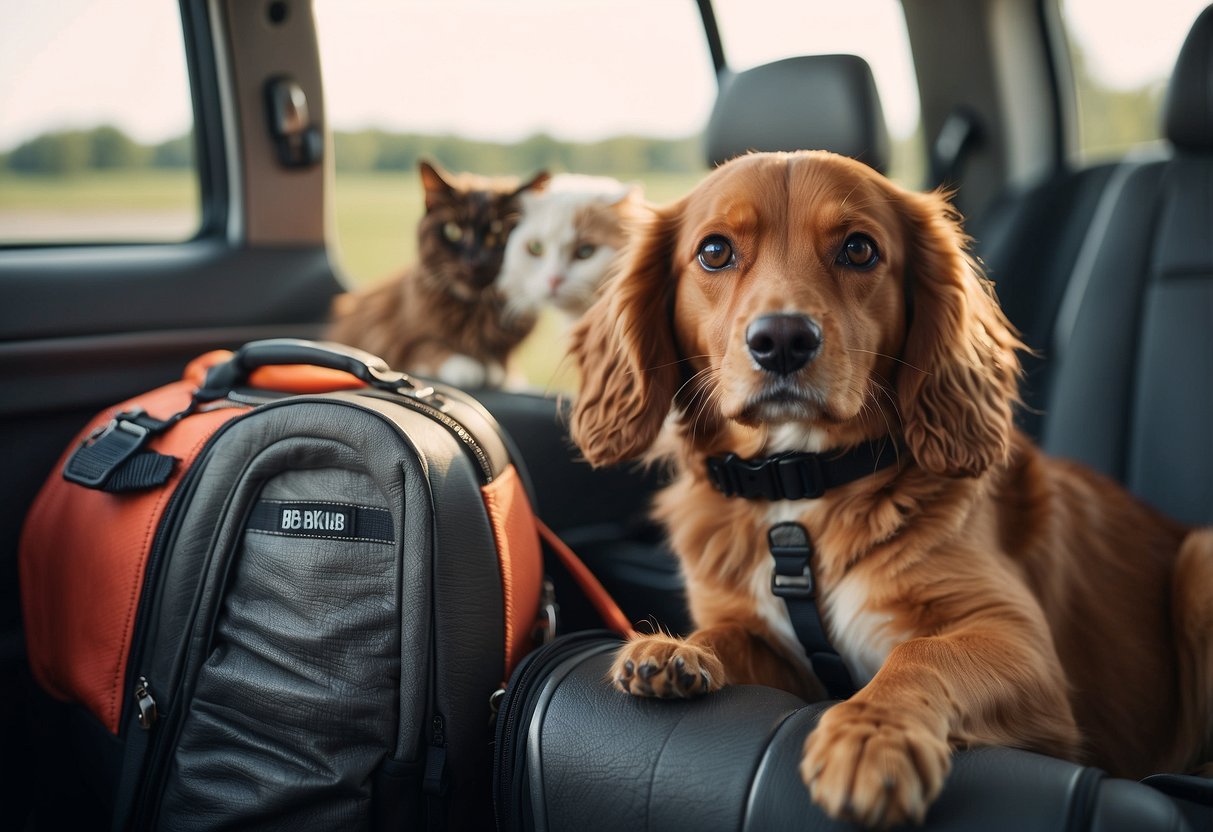
Dealing with Motion Sickness
For pets prone to motion sickness, withholding food for a few hours before travel may reduce discomfort. Plenty of fresh water should be available, but avoid feeding close to departure time.
Using a pet carrier that provides stability can help. Natural remedies like ginger or over-the-counter solutions recommended by a vet may alleviate symptoms. Some pets respond well to calm, reassuring voices and familiar scents like a favorite blanket.
Regular breaks during car travel can give pets a chance to walk and enjoy fresh air. Monitoring the pet for signs of distress, such as excessive drooling or whining, helps in adjusting the travel plan as needed.
Packing Essentials for Your Pet
When traveling with your pet, it’s crucial to ensure they have their basic needs met to keep them comfortable and safe. Important items to bring include proper feeding tools and comforting toys.
Feeding and Watering on the Road
Ensuring your pet stays hydrated and well-fed is essential. Portable bowls are a useful item to pack, as they can be easily stored and used. These are often collapsible for convenience. It’s also wise to bring along a sufficient quantity of your pet’s usual food to avoid digestive issues that might arise from sudden diet changes. Pre-pack individual servings in airtight containers to maintain freshness and prevent spills.
Having a clean water supply is equally important. Always carry bottled water or a filtration system to ensure your pet has access to safe drinking water. Pack enough water to last the entire trip and consider bringing a thermos to keep it cool.
Toys and Comfort Items
Toys and comfort items can help keep your pet relaxed during travel. Familiar items like their favorite blanket or bed can provide comfort and reduce anxiety. These items carry the scent of home, which can be soothing in unfamiliar environments. Small, soft toys are great for keeping your pet entertained without taking up too much space.
It’s also a good idea to pack a variety of toys that cater to different activities. Chew toys can keep your pet occupied if they tend to be anxious or bored. Interactive toys can provide mental stimulation during breaks in the journey. Ensure all toys are durable and safe, free from small parts that could be swallowed.
Emergency Care Information
It’s vital to be prepared for any emergencies when traveling with pets. Knowing where to find veterinarians and how to administer first aid can make a significant difference in critical situations.
Locating Veterinarians Abroad
Before embarking on your journey, compile a list of veterinarians near your travel destinations. Many countries have veterinary associations with online directories that provide contact information and services offered.
Upon arrival, ask locals for recommendations. Expats and pet owners typically know the best clinics. Keep the contact details of these veterinarians handy, and ensure they offer emergency services, as not all clinics operate around the clock.
In case of language barriers, having a translation app can be extremely useful. Additionally, carrying your pet’s medical records and vaccination history in both English and the local language can expedite emergency care.
First Aid for Pets
Basic first aid knowledge can stabilize your pet until professional help is available. Always pack a first aid kit tailored for your pet, including essentials such as bandages, antiseptics, and tweezers.
If your pet encounters a minor injury like a cut or scrape, clean the wound gently with antiseptic and apply a bandage. For more serious issues like choking or broken bones, a temporary solution may prevent the condition from worsening.
Be familiar with the signs of common pet emergencies like heatstroke, allergic reactions, and poisoning. Recognizing symptoms early can save your pet’s life. Learn the basics of CPR for pets and practice it periodically to ensure you’re prepared.



